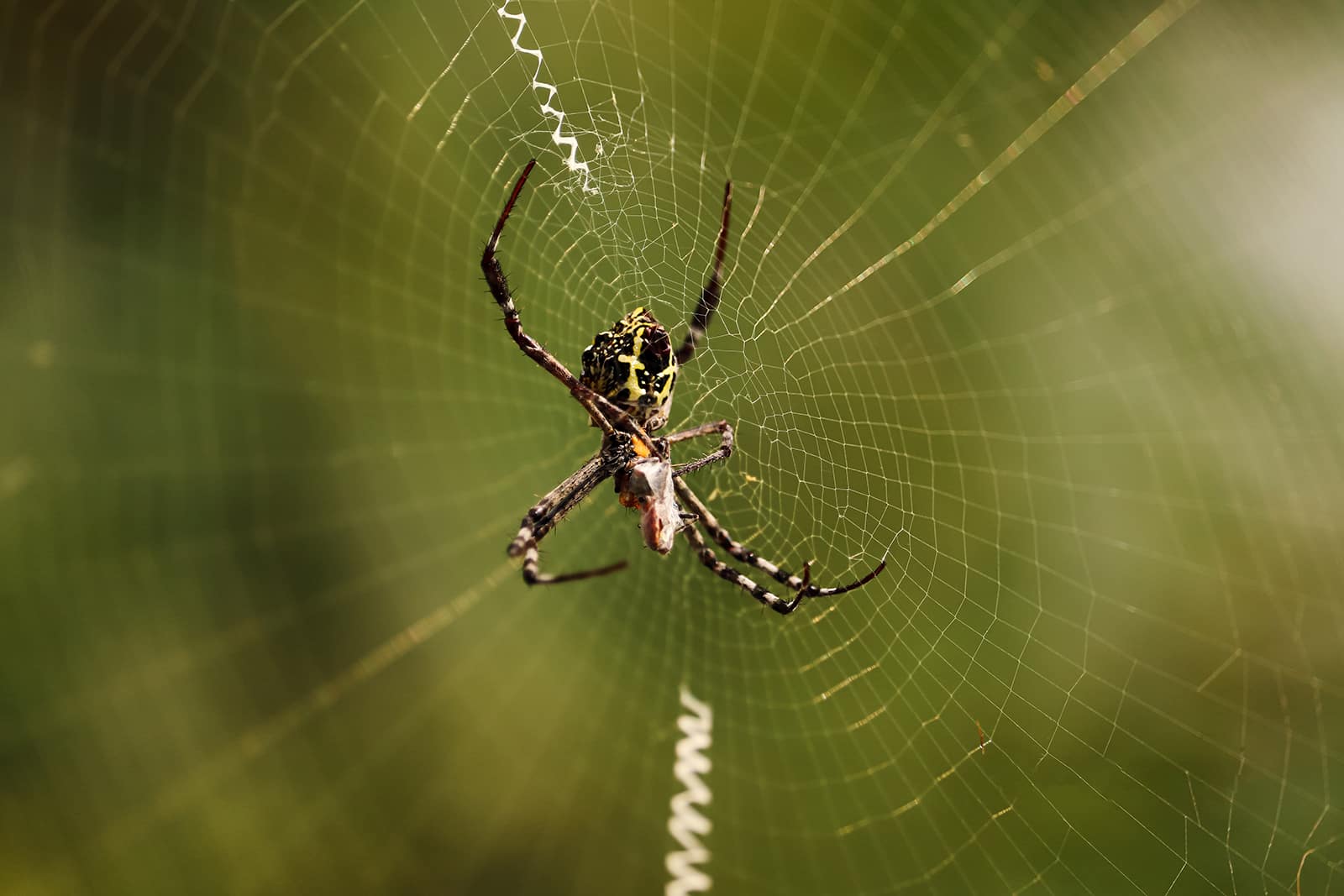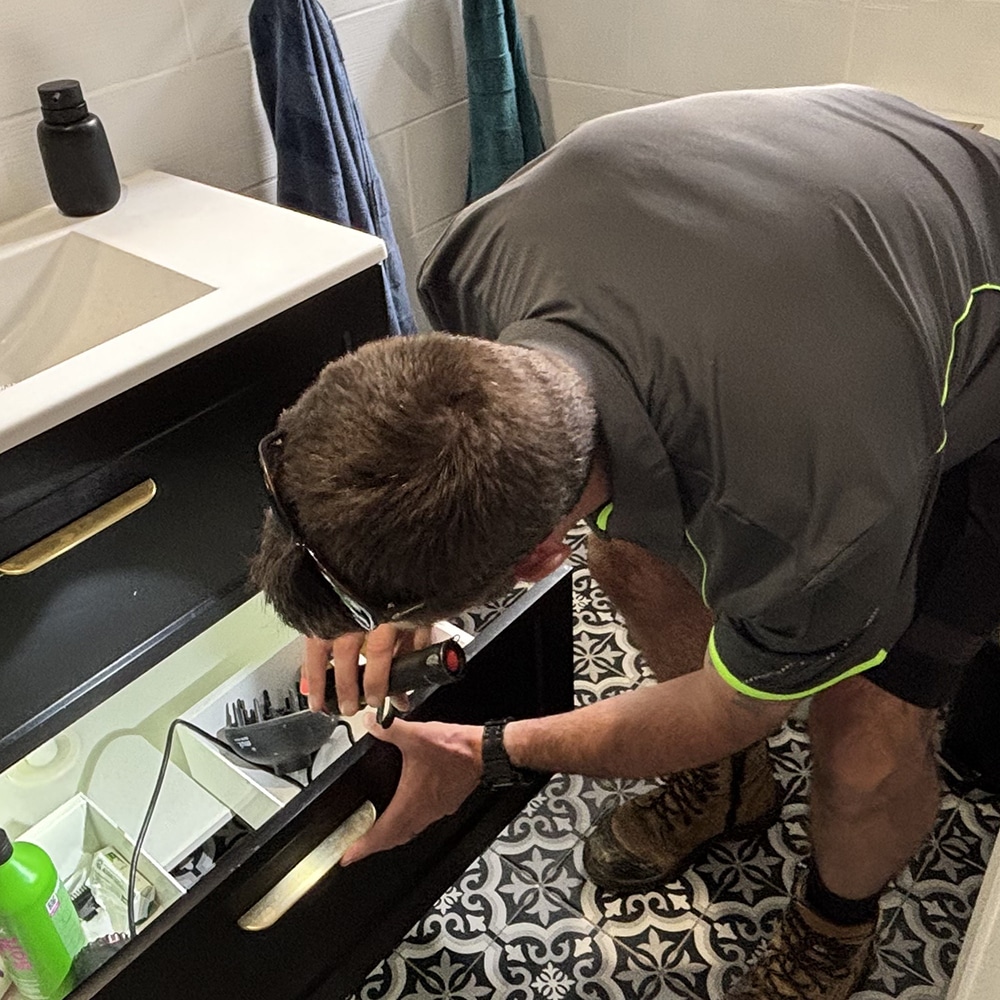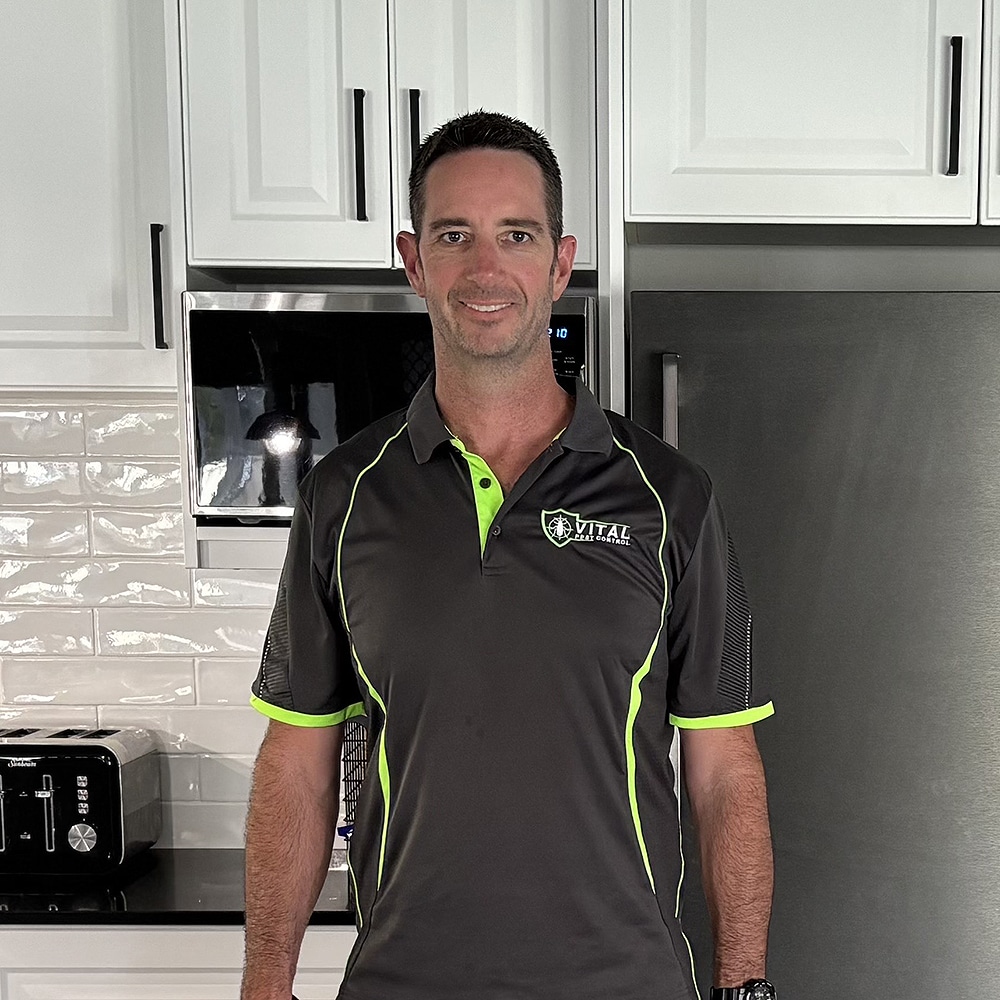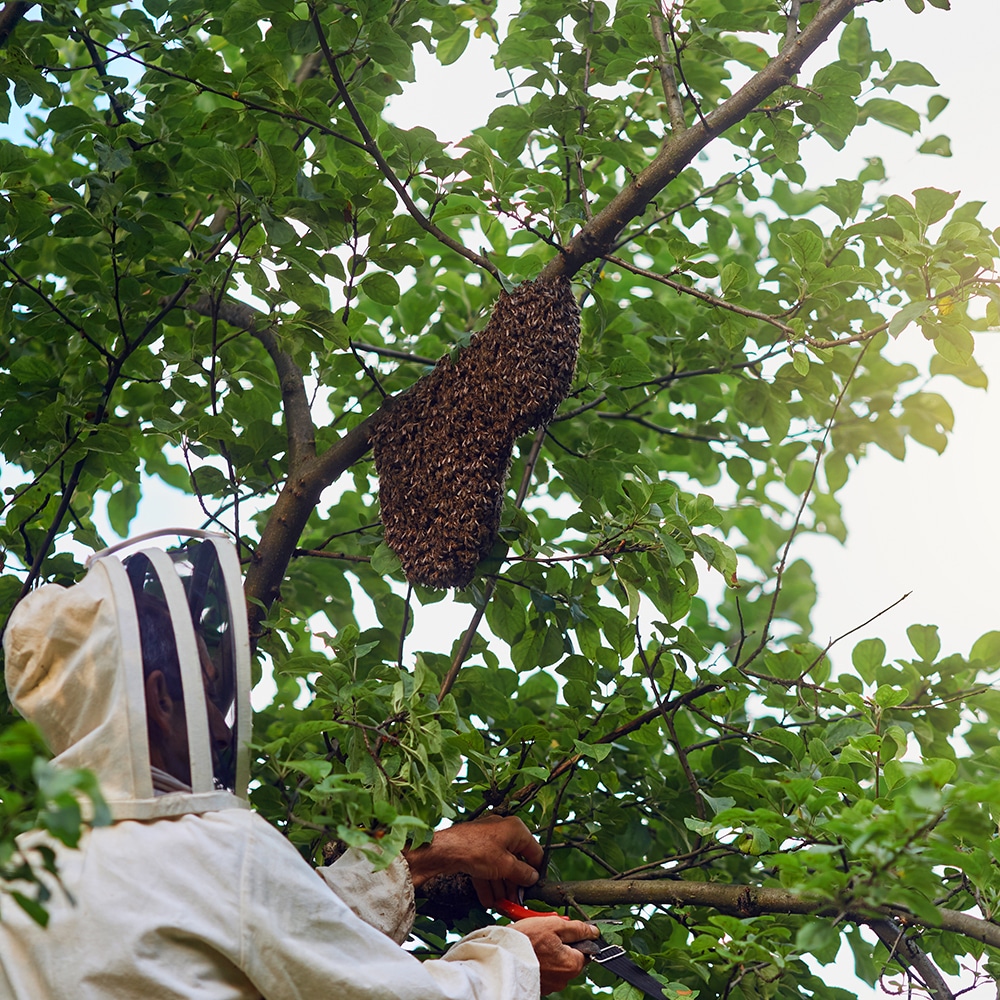
Why Do Spiders Come Back And Why
Why Do Spiders Come Back And Why On The Central Coast NSW. Responsive Proactive Solutions. Detail-focused for lasting results. Call Adam on 0431 222 894
When it comes to common household pests, effective control methods are essential. At Vital Pest Control, we offer reliable solutions. Whether you’re dealing with cockroaches or spotting bed bug signs, we’ve got you covered. Our services on the Central Coast NSW ensure peace of mind for your home.
Dealing with Cockroaches
Cockroaches can spread diseases and allergens. Eliminate food sources by keeping kitchens clean. Use bait stations for effective control. Vital Pest Control provides trustworthy solutions for lasting results.
Handling Ants in Kitchens
Ants invade kitchens searching for food. Seal entry points and store food in airtight containers. Our proactive solutions prevent infestations, ensuring a clean kitchen environment.
Getting Rid of Fleas or Ticks
Fleas and ticks can harm pets and humans. Regularly vacuum and wash pet bedding. Vital Pest Control offers responsive treatments to keep your family safe.
Spotting Bed Bug Signs
Bed bugs hide in mattresses and furniture. Look for tiny blood stains and shed skins. Early detection is key to effective treatment.
Identifying Spider Hotspots
Spiders often nest in dark corners and garages. Clear clutter to minimise hiding spots. We focus on detail for lasting spider control.
Preventing Stored Product Pests
Flour beetles and moths thrive in pantry staples. Store grains in sealed containers. Regularly check for infestations to keep food safe.
Checking for Beetles or Moths
Inspect cereals and grains for beetles or moths. Early identification prevents widespread infestation. Trust our team for expert advice and control methods.
Recognising Signs of Silverfish
Silverfish damage paper and fabrics. Look for small holes or yellow stains. Our specialists offer solutions tailored to your home.
Discover how we can help you today! Contact us at Contact

When it comes to household pests, cockroaches are among the most notorious, especially in Central Coast NSW. These resilient insects can thrive in various environments, making them a common nuisance. Understanding how to effectively manage and prevent cockroach infestations is crucial for maintaining a healthy home. Vital Pest Control offers expert solutions tailored to tackle these unwelcome visitors.
Identifying Cockroach Infestations
Spotting a cockroach can be alarming. These pests often hide in dark, damp areas like under sinks or behind appliances. Keep an eye out for droppings, egg cases, or a musty odour, all signs of cockroach activity. Early detection can prevent a full-blown infestation, saving time and stress.
Preventive Measures
Prevention is key. Regular cleaning and removing food scraps can reduce cockroach attractions. Seal entry points such as cracks and crevices around doors and windows. Vital Pest Control recommends regular inspections to catch potential problems before they escalate.
Professional Pest Control Solutions
If you suspect an infestation, professional intervention can be the most effective solution. Vital Pest Control provides comprehensive services that include inspection, treatment, and follow-up visits. Their expertise ensures that cockroach problems are not only addressed but prevented in the future.
Ants in the kitchen are a common issue for many households on the Central Coast NSW. These tiny invaders can be a nuisance, contaminating food and surfaces. Understanding how to effectively manage and prevent an ant infestation is crucial for maintaining a clean and hygienic kitchen environment.
Identifying Ant Trails
Ants often follow a trail, using pheromones to guide other ants to food sources. Spotting these trails can be the first step in controlling the infestation. Look for trails along countertops, cupboards, and around food storage areas. Identifying these paths helps in targeting the source of the problem effectively.
Removing Food Sources
To deter ants, it’s essential to keep your kitchen clean and free of food debris. Store food in airtight containers and promptly clean up spills or crumbs. Regularly check pantry items for signs of ants and discard any infested goods. This reduces attractants, making your kitchen less appealing to ants.
Natural Deterrents
For those preferring eco-friendly methods, natural deterrents like vinegar, lemon juice, and peppermint oil can repel ants. Wipe surfaces with a solution of vinegar and water or sprinkle peppermint oil around entry points. These natural solutions can help keep ants at bay without the use of harsh chemicals.
Professional Pest Control
If ants persist despite your efforts, it might be time to call in the professionals. Vital Pest Control on the Central Coast offers targeted solutions to tackle stubborn infestations. Their expertise ensures long-term prevention, keeping your kitchen ant-free and safe for your family.
Fleas and ticks are more than just nuisances; they pose health risks to both pets and humans. Located on the Central Coast NSW, Vital Pest Control understands the importance of effective pest management. These pests can quickly become a household problem, making timely and efficient control methods crucial.
Understanding Flea and Tick Behaviour
Fleas and ticks thrive in warm, humid environments and can hitch a ride on pets, entering homes unnoticed. While fleas often multiply rapidly, ticks patiently await a host, making both equally challenging to manage. Recognising their behaviour is the first step in effective pest control.
Effective Treatment Options
For flea control, regular vacuuming and washing pet bedding can reduce infestations. Consider professional pest control services for thorough treatment. Ticks require careful removal with tweezers to avoid leaving parts in the skin. Professional services can also provide preventative measures to keep ticks at bay.
Preventative Measures
Preventative strategies include using pet-safe insecticides and maintaining a tidy yard to reduce habitat areas. Regularly checking pets for fleas and ticks, especially after outdoor activities, helps catch infestations early. Professional guidance ensures that prevention methods are safe and effective.
Vital Pest Control offers tailored solutions to handle flea and tick problems, providing peace of mind for Central Coast residents. By understanding pest behaviour and implementing proper measures, households can effectively manage these common pests.
Bed bugs are tiny, nocturnal pests that can invade homes on the Central Coast of NSW. Recognising the signs of bed bugs early is vital for effective pest control. This allows you to address the problem before it becomes an infestation. Spotting these signs can save time, money, and stress.
Identifying Bed Bug Bites
Bed bug bites often appear as small, red welts on the skin. They are usually grouped together or in a zigzag pattern. Some people experience itching or swelling, while others may not react at all. If you wake up with unexplained bites, consider the possibility of bed bugs.
Detecting Bed Bug Droppings
Bed bug droppings are dark spots that resemble ink marks. You might find these on your mattress seams, bed frame, or nearby furniture. The presence of these spots indicates bed bug activity and should prompt immediate investigation.
Searching for Bed Bug Shells
As bed bugs grow, they shed their skins. These pale, empty shells can be found in hiding places such as mattress creases or behind headboards. Discovering these shells suggests a growing bed bug problem.
Addressing bed bug signs promptly is essential for effective pest management. If you suspect an infestation, consulting a professional pest control service in the Central Coast area is recommended.
Spiders, though vital to ecosystems, can become unwelcome guests in homes along the Central Coast of NSW. Identifying spider hotspots is crucial for effective pest control, ensuring a safer and more comfortable living environment.
Common Spider Hideouts
Spiders often seek refuge in dark, undisturbed areas. Garages, basements, and attics serve as perfect hideaways. These spaces offer ample food sources and shelter, making them prime spider hotspots. Regularly inspecting and decluttering these areas can significantly reduce spider presence.
Outdoor Areas
Gardens and sheds, filled with insects, attract spiders. Overgrown vegetation and piles of debris provide ideal habitats. Keeping lawns trimmed and removing debris can help minimise spider populations. Check under pot plants and behind outdoor furniture for hidden webs.
Windows and Doors
Spiders often enter homes through small openings around windows and doors. These entry points can become hotspots if not sealed properly. Installing screens and using weather stripping can prevent spiders from sneaking inside, reducing potential infestations.
Ceiling Corners and Wall Crevices
Inside homes, spiders frequently inhabit ceiling corners and wall crevices. These areas offer shelter and vantage points for hunting. Regular cleaning and vacuuming can disrupt these habitats, discouraging spiders from settling.
Stored product pests can cause significant damage to food supplies in homes across the Central Coast of NSW. These pests, often found in pantries and storage areas, can contaminate food items, leading to waste and potential health risks. Understanding how to prevent these pests is crucial for maintaining a pest-free home.
Identifying Common Stored Product Pests
Several pests commonly infest stored products, including pantry moths, flour beetles, and weevils. These pests are often attracted to grains, cereals, and dried fruits. Identifying the presence of these pests early can help prevent a widespread infestation. Look for signs such as webbing, larvae, or small beetles in your stored food items.
Proper Storage Techniques
Storing food properly is key to preventing infestations. Use airtight containers to store dry goods like flour, rice, and cereals. This not only maintains freshness but also deters pests. Regularly clean your pantry and remove expired items, as these can attract unwanted pests.
Regular Inspections and Cleaning
Conduct regular inspections of your pantry and storage areas. Look for signs of pests and clean shelves thoroughly. Vacuuming can remove food particles that attract pests. Regular cleaning disrupts breeding cycles and reduces the risk of infestation.
Professional Pest Control Solutions
If you notice persistent pest problems, consider engaging a professional pest control service like Vital Pest Control on the Central Coast. Experts can provide tailored solutions to effectively manage and prevent stored product pests, ensuring your home remains pest-free.
On the Central Coast of NSW, beetles and moths can become unwelcome guests in homes. These pests can damage furnishings, infest food supplies, and cause significant discomfort. Recognising the signs of beetle or moth activity, and understanding how to manage these pests, is crucial for maintaining a comfortable living environment.
Identifying Beetle and Moth Infestations
Start by inspecting your home thoroughly. Beetles often leave behind small holes in wood or fabric, while moths might be spotted fluttering around lights. Pay attention to dark corners, attics, and pantries where these pests typically hide. Look for larvae, as they often signal an infestation. Spotting these signs early can prevent a minor issue from becoming a major problem.
Effective Prevention Strategies
Prevention is key to controlling beetle and moth populations. Seal cracks and crevices to eliminate entry points. Regularly clean and vacuum areas prone to infestation. Store food in airtight containers to deter pantry moths. Using natural repellents like cedar can also be effective in keeping these pests at bay.
Professional Pest Control Solutions
When infestations become too challenging to handle alone, professional pest control services are essential. Experts use targeted treatments that address specific pest problems without harming your home environment. On the Central Coast, pest control professionals can provide tailored solutions to ensure your home remains free from these destructive insects.
Silverfish are sneaky little creatures that can cause headaches for homeowners on the Central Coast. These pests thrive in damp, dark areas and can be found in various parts of your home. Recognising the signs of silverfish can help you take action before they become a bigger problem.
Visible Damage to Items
Silverfish are notorious for munching on paper products, including books, wallpaper, and important documents. If you notice holes or irregular notches in these items, silverfish might be the culprits. Keep an eye on your stored boxes and files, as they are prime targets for silverfish activity.
Fecal Matter and Shed Skins
Spotting small, pepper-like droppings in your cupboards or bookshelves? This could indicate a silverfish presence. These pests also shed their skins as they grow, so finding tiny, transparent skins might confirm your suspicions.
Unusual Activity in Damp Areas
Silverfish love moisture, so they often hide in bathrooms, basements, and laundry rooms. If you spot them scurrying away when you turn on the lights in these areas, it’s time to consider pest control solutions. Regular inspections and keeping these areas dry can minimise their attraction.
Monitoring for occasional invaders is crucial for maintaining a pest-free environment on the Central Coast of NSW. These pests, while not typically harmful, can become a nuisance if left unchecked. Understanding their behaviour and knowing how to monitor them effectively can prevent infestations and reduce the need for more aggressive pest control methods.
Identifying Occasional Invaders
Occasional invaders include pests like silverfish, millipedes, and earwigs. These creatures usually enter homes seeking shelter, food, or moisture. Recognising these invaders is the first step in monitoring. Silverfish have a distinctive teardrop shape and are often found in bathrooms and kitchens. Millipedes, with their numerous legs, may be spotted in damp, secluded areas. Earwigs are identifiable by their pincer-like appendages and tend to hide in dark corners.
Monitoring Techniques
Regular inspections are key to monitoring for occasional invaders. Check damp areas like basements and bathrooms, as these pests thrive in moisture. Use sticky traps to capture and identify invaders. Place these traps in suspected areas to monitor movement. Regularly inspect and maintain these traps to gauge pest activity and adjust control methods accordingly.
Preventive Measures
Prevention is a vital aspect of monitoring. Seal cracks and gaps in walls, windows, and doors to restrict entry. Reduce moisture by fixing leaks and using dehumidifiers. Keep storage areas tidy and dry to deter these pests. Regular cleaning and maintenance can significantly reduce the chances of an infestation.
Living on the Central Coast of NSW, residents often encounter various household pests. Effective pest control is crucial to maintaining a safe and comfortable home environment. Understanding the appropriate control methods for different pests can significantly enhance pest management efforts and ensure long-term solutions.
Ants
Ants can invade your home in search of food and water. To control these persistent visitors, focus on removing their access to sustenance by sealing food containers and cleaning up spills promptly. Bait traps can be particularly effective; they attract ants and slowly poison the colony. For severe infestations, professional pest control services can identify and eliminate nests.
Termites
Termites pose a serious threat to the structural integrity of homes. Early detection is vital. Regular inspections by a pest control expert can help identify activity before significant damage occurs. Treatments like chemical barriers and baiting systems are commonly used to eradicate termites. Prevention includes reducing moisture around the home and removing wood debris.
Rodents
Rodents such as rats and mice can spread diseases and cause damage. To control these pests, eliminate entry points by sealing cracks and holes in walls or foundations. Traps and bait stations can effectively reduce rodent populations. Professional pest control services offer comprehensive solutions, ensuring thorough eradication and prevention strategies tailored to Central Coast homes.
Pest control on the Central Coast of NSW requires a strategic approach. Combining sanitation with baits ensures effective pest management. This method targets common household pests by disrupting their environment and reducing their numbers.
Importance of Sanitation
Sanitation forms the foundation of effective pest control. By eliminating food sources and nesting areas, pests find it challenging to thrive. Regular cleaning, proper waste disposal, and sealing food containers are key steps. These actions reduce the attraction of pests like ants and cockroaches.
Effective Use of Baits
Using baits complements sanitation by targeting pests directly. Baits contain attractants that lure pests, ensuring they consume the poison. This approach is essential for dealing with stubborn infestations. Positioning baits in strategic locations like under sinks and behind appliances maximises their impact.
Integrating Both Methods
Combining sanitation with baits creates a comprehensive pest control strategy. While sanitation removes immediate attractions, baits reduce existing pest populations. This dual approach increases the chances of long-term success. Regular monitoring and adjustments ensure pests remain under control, safeguarding homes on the Central Coast.
Choosing the right insecticide for pest control on the Central Coast NSW is crucial for maintaining a healthy home environment. It’s important to consider both efficacy and safety, ensuring you’re not only eliminating pests but also protecting your family and surroundings.
Understanding Pest Types
Identifying the specific pests troubling your home is the first step. Different insects require different control methods. Cockroaches, ants, and spiders each react to various insecticides. Knowing what you’re dealing with helps in selecting the most effective treatment, preventing waste of resources and time.
Evaluating Insecticide Ingredients
Look at the active ingredients in insecticides. Natural options like pyrethrin, derived from chrysanthemums, might be preferable for indoor use due to their lower toxicity. For outdoor areas, stronger synthetic chemicals may be necessary to tackle persistent pests. Always read labels for safety information.
Safety and Application Techniques
Consider how the insecticide will be applied. Sprays, baits, and powders all have unique benefits and risks. Ensure you follow application instructions carefully to avoid unnecessary exposure. Using protective gear like gloves and masks can further enhance safety during application.
Environmental Considerations
Choose insecticides that are environmentally friendly. Opt for products with minimal impact on non-target species and the surrounding ecosystem. This approach not only protects local wildlife but also promotes a sustainable pest control strategy.
Living on the Central Coast NSW means dealing with common household pests. Vital Pest Control offers solutions, but understanding the timeline for results is crucial for setting expectations.
Initial Assessment and Action
When you first contact Vital Pest Control, they assess your property. This initial inspection helps identify pest types and infestation levels. Usually, the first treatment occurs soon after. Immediate results often become visible within days, especially for visible pests like cockroaches and ants.
Follow-Up Treatments
For comprehensive pest control, follow-up treatments are essential. Depending on the pest and infestation size, these may occur over weeks. For instance, termites or rodents might require multiple visits. Consistent follow-ups help ensure pests are eradicated and prevent future invasions.
Long-Term Management
Pest control is not just a one-off solution. Vital Pest Control recommends regular maintenance plans tailored to your needs. These plans might include quarterly inspections and treatments. Long-term management ensures your home stays pest-free, giving you peace of mind.
Monitoring and Adjustments
After initial treatments, monitoring is vital. Vital Pest Control checks for signs of recurring infestations. If pests return, they adjust strategies to combat them effectively. This proactive approach ensures persistent pest management and protection for your property.
In the quest to protect homes from pests on the Central Coast NSW, it’s crucial to avoid the common pitfall of over-treatment. Not only can excessive pest control measures harm the environment, but they can also lead to unnecessary costs and potential health risks. Being mindful of treatment methods is vital for effective and sustainable pest management.
Understanding the Pest Problem
The first step in avoiding over-treatment is to accurately identify the pest issue at hand. Misidentifying pests can lead to the application of inappropriate treatments, which may be excessive. Engaging with a professional pest control service ensures that the specific pest is correctly targeted, reducing the need for broad-spectrum treatments.
Emphasising Targeted Solutions
Once the pest is identified, focus on targeted control methods. Tailored solutions minimise the use of chemicals and focus on the most effective treatments for the specific pest. This approach not only reduces the environmental impact but also preserves beneficial insects that help maintain a balanced ecosystem.
Implementing Preventive Measures
Prevention is key to reducing reliance on chemical treatments. Regular maintenance and inspections can help detect pest issues early, allowing for prompt and minimal intervention. Sealing entry points, managing waste, and maintaining clean environments are simple yet effective strategies to prevent pest infestations.
Continuously improving your pest control practices on the Central Coast NSW is key to effectively managing common household pests. Adapting to new challenges ensures your home remains a safe, pest-free environment.
Regular Training and Education
Staying informed about the latest pest control techniques and products is vital. Regular training sessions for your team can lead to more efficient and environmentally friendly practices. Courses on identifying pest behaviour and integrating new control methods can significantly enhance your approach.
Implementing Feedback Mechanisms
Gathering feedback from clients provides insights into the effectiveness of your pest control strategies. Encouraging customers to share their experiences helps identify areas needing improvement. This information allows you to adapt your methods, ensuring high client satisfaction.
Monitoring and Evaluating Results
Consistent monitoring of pest control outcomes is essential. Evaluating the success of your tactics through regular assessments can highlight what works and what doesn’t. This ongoing analysis helps refine your approach, leading to more effective pest management solutions.
By focusing on these continuous improvement strategies, you can maintain effective pest control on the Central Coast NSW, ensuring long-term success and client trust.
Please leave your details in the form and we will call you back the same day.
So that we can process your enquire efficiently please leave as many details as possible and upload any relevant images. (.jpg and .png format)

Why Do Spiders Come Back And Why On The Central Coast NSW. Responsive Proactive Solutions. Detail-focused for lasting results. Call Adam on 0431 222 894

Building a Long Term Residential Pest Protection Plan For Home Owners On The Central Coast NSW. Responsive Proactive Solutions. Detail-focused for lasting results. Call Adam on 0431 222 894

How to Protect Your Home from Wasp Infestations On The Central Coast NSW. Responsive Proactive Solutions. Detail-focused for lasting results. Call Adam on 0431 222 894